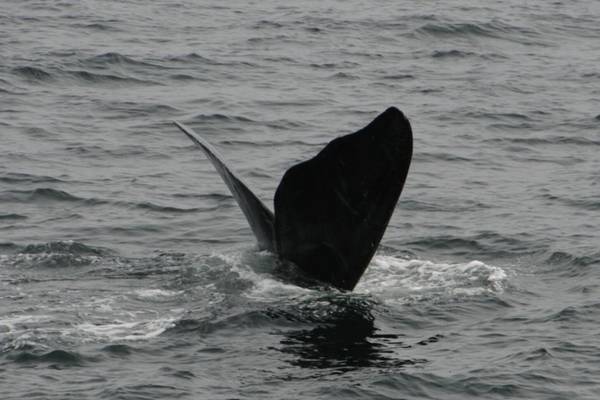Scientists Unveil New Names for 18 North Atlantic Right Whales
Oct 27, 2025

© North Atlantic right whale “Lasagna” (Catalog #3550) is named for his wavy fluke blades that look like a lasagna noodle. CREDIT: New England Aquarium and Canadian Whale Institute, taken under DFO Canada SARA permit
Scientists at the New England Aquarium are unveiling a new slate of named North Atlantic right whales, an annual tradition that helps researchers in the field identify the critically endangered animals in real time.
Every right whale in the North Atlantic Right Whale Catalog has a number assigned to them, and many of these whales have also been given names that help scientists more easily recognize the whales when they see them during field work. Even for a small population of around 380 individuals, remembering numbers for each whale can be daunting, so names can make it easier. This year, 18 right whales were assigned names.
The naming process involves submissions from North Atlantic Right Whale Consortium members and various research organizations, who then participate in a ranked choice voting system. The names are intended to relate to easily recognizable features or facts about the individual whales.
“Whale naming is a fun and lighthearted way to bring the community together,” said Amy Warren, Scientific Program Officer in the New England Aquarium’s Anderson Cabot Center for Ocean Life, who coordinates the naming efforts. “It also allows us to connect with the whales at an individual level, including their habits and relatives.”
The 2025 group includes “Lasagna” (Catalog #3550), a 20-year-old male who is named for his wavy fluke blades that look like a lasagna noodle. Another male right whale, “Scorpion” (Catalog #3892), was named for his callosity (white patches of raised tissue) that looks like a scorpion with its tail raised. A 14-year-old female right whale was named “Dandelion” (Catalog #4120) for her callosity that looks like a dandelion flower with seeds blowing in the wind.
The Aquarium collaborates with Whale and Dolphin Conservation (WDC) on playful yearbook-style bios for each of the newly named whales. Scorpion's bio indicates his favorite song is “The Fate of Ophelia” by Taylor Swift because her lyrics mention a “bed full of scorpions.”
Other names from this year’s right whale class include a 16-year-old female, “Taffy” (Catalog #3903), who is named for part of her callosity that looks like it's being stretched across her head like taffy.
“Spectre” (Catalog #3915) received an eerie name just in time for October because of a scar on her back that resembles a ghostly apparition, and her mother is named “Ghost” (Catalog #1515). Another new family name this year is “Athena” (Catalog #5312), a 2-year-old female named for the Greek Goddess of War due to her entanglement scars and her mother being named “War” (Catalog #1812).
This month, the North Atlantic Right Whale Consortium released the latest population estimate for the North Atlantic right whale, which shows the species heading in a positive direction for the fourth straight year. The estimate for 2024 is 384 individuals, representing a 2.1 percent increase in population size from the 2023 estimate. While conservation and management efforts have progressed, the critically endangered species still faces threats including fishing gear entanglements and vessel strikes. Scientists note that strong protection measures are needed to allow the species to rebound.
The New England Aquarium has been studying North Atlantic right whales for more than 40 years. Scientists in the Aquarium’s Anderson Cabot Center conduct vessel- and aerial-based fieldwork to research and monitor right whales, assess human-caused scarring, analyze hormones to determine stress levels, and develop solutions to reduce the impacts of human ocean use. In collaboration with an extensive network of individuals and research organizations along the eastern seaboard, Anderson Cabot Center scientists curate the North Atlantic Right Whale Catalog. By collecting photos and cataloging the natural markings on whales such as callosities, the scientists track their life stories including births, injuries, migration patterns, and age to create detailed histories of each individual whale. Names further contribute to those histories.
For more than 20 years, Whale and Dolphin Conservation – North America has worked to reduce vessel strikes and accidental entanglements in fishing gear through a dedicated program to recover North Atlantic right whales. As part of a collaborative effort, WDC is supporting efforts to enable fishermen to test on-demand fishing gear, which significantly reduces the chances of whales becoming entangled.
Through policy and boater outreach programs, WDC has helped to create seasonal slow zones to keep boaters and whales safe and, using a life-sized inflatable North Atlantic right whale, WDC educates more than 10,000 individuals each year on the plight of this endangered species.
whales
Ocean Conservation